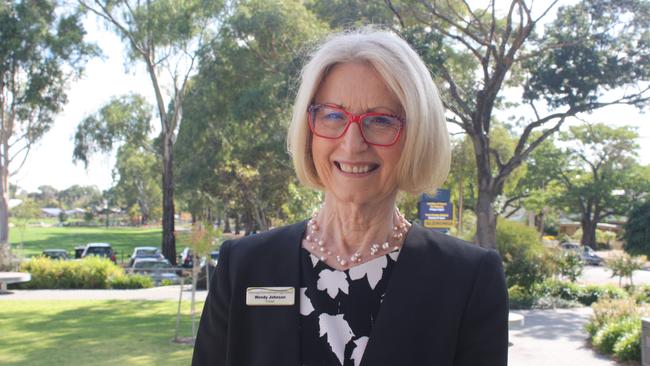Search the database: Best SA high schools for NAPLAN results
The shift for Year 7s into high school will make it easier for teachers to use NAPLAN to help their students progress, principals say. See how SA’s high schools fared in Year 9 results.
Schools Hub
Don't miss out on the headlines from Schools Hub. Followed categories will be added to My News.
- How every SA school performed in NAPLAN
- NAPLAN tables: SA schools that get an A for improvement
- SA’s best-performing Catholic and Independent schools
The shift of Year 7 into high schools will result in teachers having better insight into the needs of individual students, the SA Secondary Principals Association says.
The public system is following the lead of private schools and moving Year 7s into high schools in 2022.
As NAPLAN is done in Years 3, 5, 7 and 9, SASPA president Peter Mader said it made more sense for high schools to have fresh NAPLAN results for students in their first year of high school.
Currently in public high schools, that doesn’t happen until students’ second year in Year 9.
Mr Mader said the change would enable teachers to work out earlier which students would benefit from being extended, and those who needed extra help.
“We’re looking forward to when all of our secondary schools have Year 7 in high school,” he said.
Mr Mader said NAPLAN was a useful diagnostic tool but should not be seen as a full assessment of a student or a school.
Analysis by The Advertiser shows public Glenunga International High School recorded the highest average scores across the literacy and numeracy tests last year.

In the top 20, Glenunga was followed mostly by private schools, but also public Kimba Area School in eighth spot, as well as Adelaide High, Marryatville High and Adelaide Botanic High.
Kimba Area School deputy principal Ryan Hanan said NAPLAN helped track growth of individual students.
“An advantage to being a small rural school is that we know our students really well,” he said.
“We have great relationships with them and their parents, inside and outside the school, which helps drive the learning.”
Salisbury East High School principal Joe Priolo said analysis of NAPLAN had helped his school improve its teaching practices across all subjects, an achievement highlighted by the state Education Department.
SCROLL DOWN TO SEARCH NAPLAN RESULTS FOR EVERY SA SCHOOL
“Literacy and numeracy were areas of concern for us,” Mr Priolo said. “So we put a lot of strategies and interventions in place which have led to an upward trend over the past four years.
“We made it very clear that literacy and numeracy is everybody’s business, that every teacher in every subject has a role to play.”
He said all teachers made sure reading, comprehension and numeracy were emphasised, while specialist subject teachers concentrated on technical aspects such as grammar and algebra.
Specific time was allocated in timetables in the middle school years for literacy and numeracy, with individual students assisted to address any weaknesses, he said.
Mr Priolo said students needed strong foundations in literacy and numeracy whether they were aiming for university, vocational training for trade careers, or going straight into employment.

Jye Marrollo said he wanted to be a plumber and found his VET course exposed him “to lots of real-life experiences”.
Mitchell LeCouteur, who is aiming for an apprenticeship in light vehicle mechanics, and Myah Shepherd, who is studying dance, said a broad assessment of their skills would be the best way for them to get a job.
Mr Mader said literacy and numeracy, the areas which NAPLAN assesses, were essential but there were many more factors and skills involved in a student achieving a high SACE subject result.
NAPLAN had a limited purpose and it was not intended as a full assessment of a student or a school.
“If we decided as a society that there was merit in comparing or benchmarking schools, we should come up with a process that honours all that is valued in schooling,” he said.
That would include the “hidden curriculum” of value gained from five or six years of secondary school life, value that goes beyond SACE results to habits and attitudes, to understanding democracy, to persistence and resilience.
“These are things schools try to instil in young people so they have a happy and productive life but you won’t see any evidence of that in a NAPLAN test,” he said.
Ms Falkenberg also cautioned about overemphasising NAPLAN’s importance.
“This is one data set for that child once every two years, and every day there are other data sets and measures as well as the teacher’s professional judgment,” she said.
Parents wanted more information about their child across broader criteria, she said.
The 2019 NAPLAN results are the most recent. This year’s tests were cancelled due to interruptions to schooling from COVID-19.
